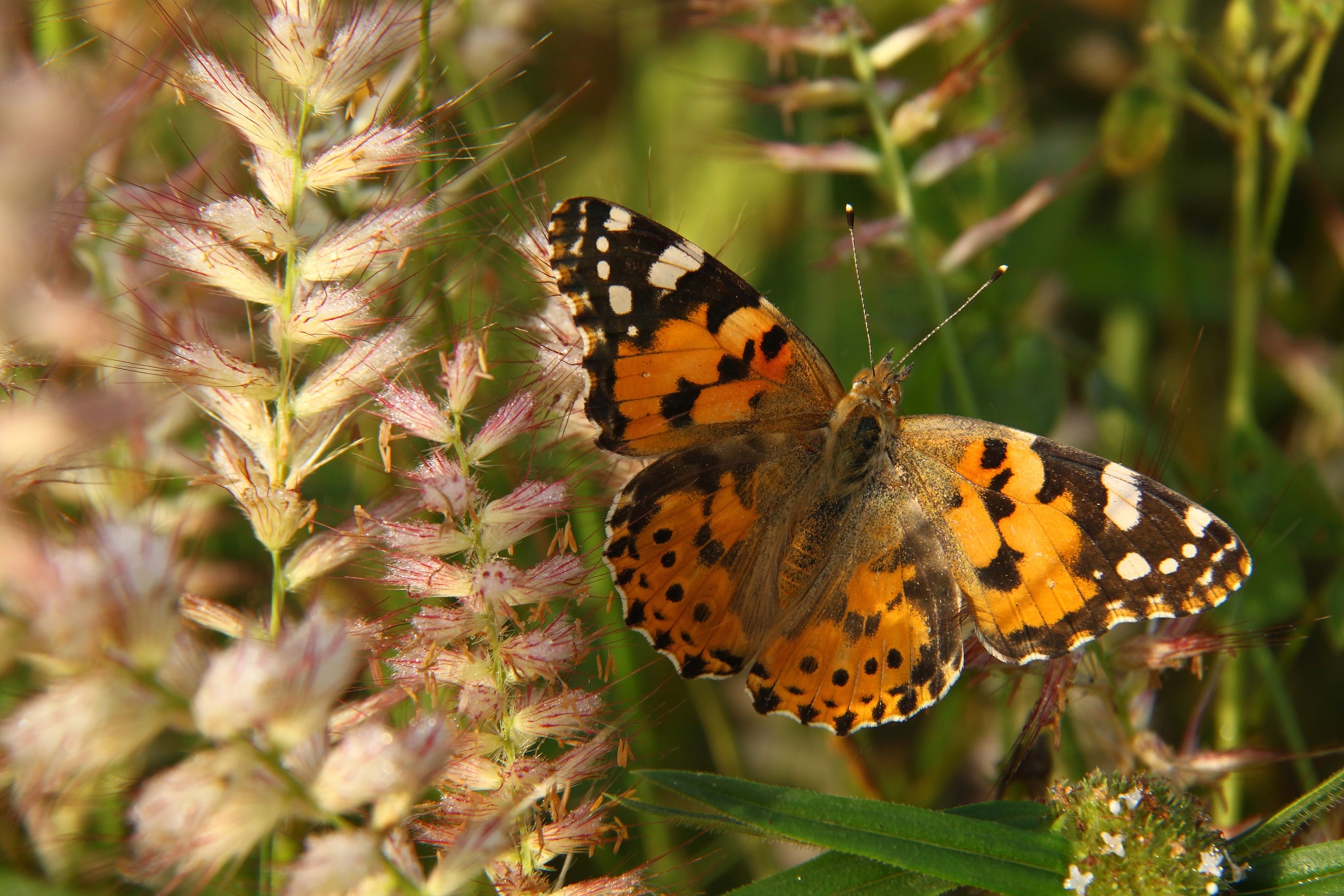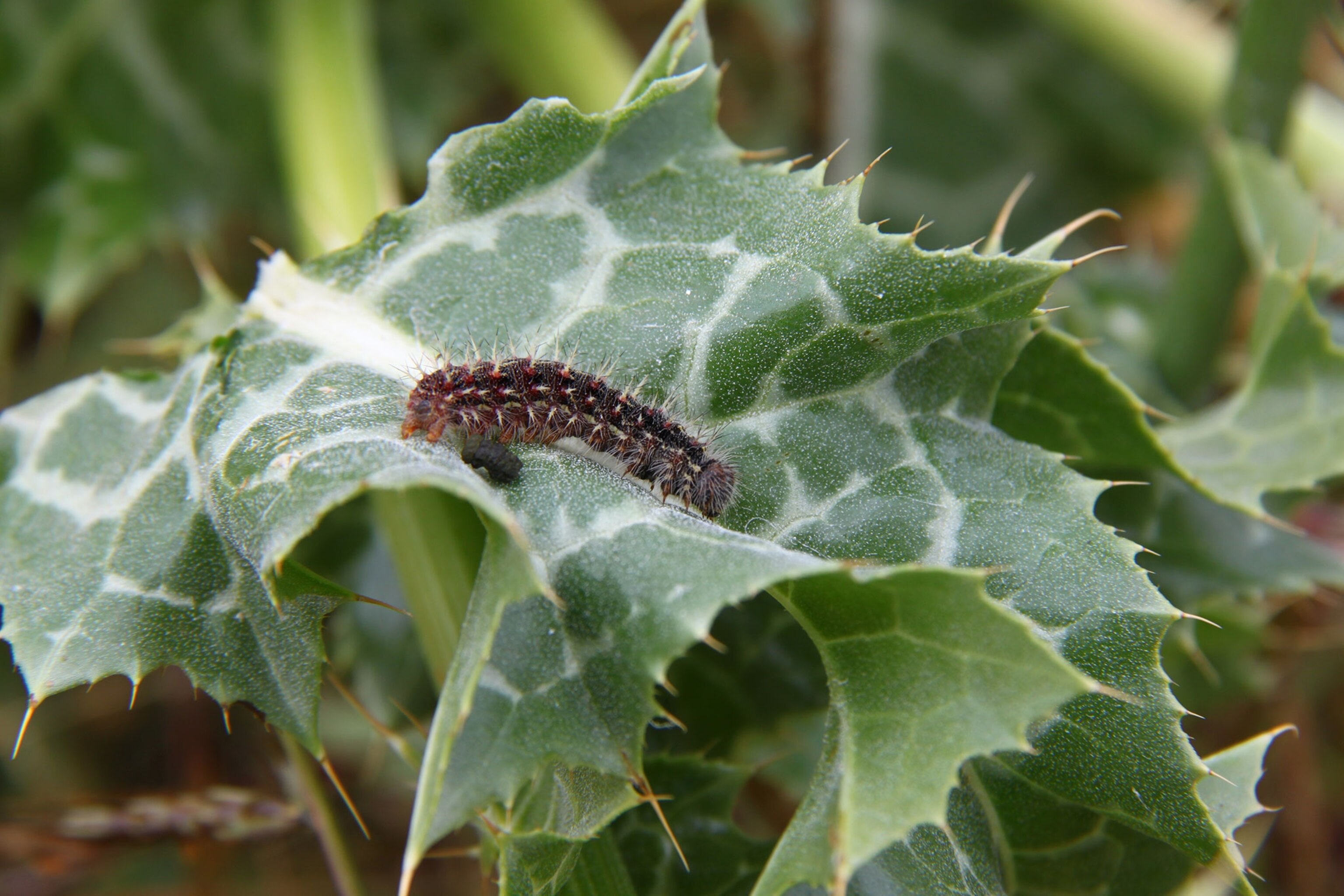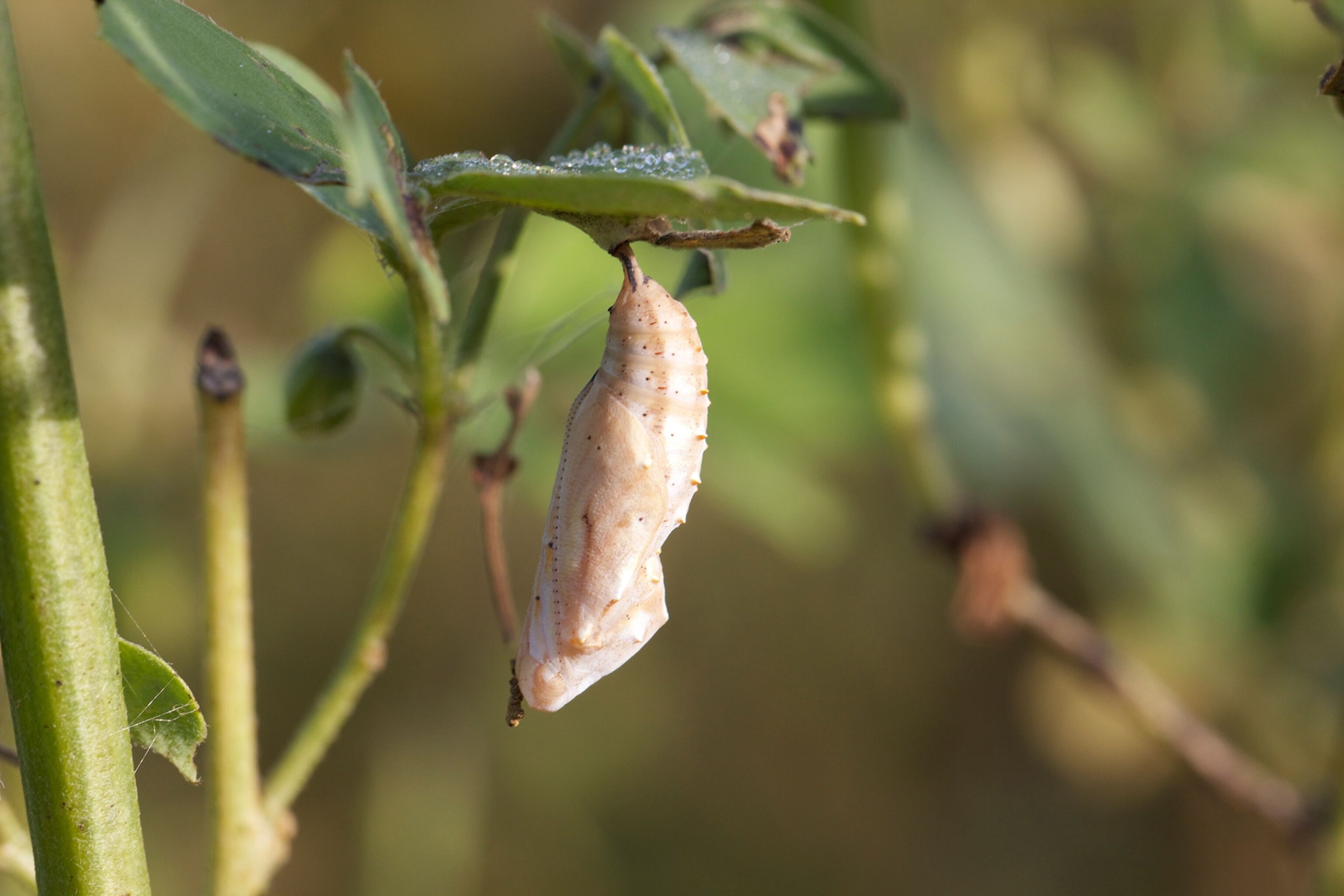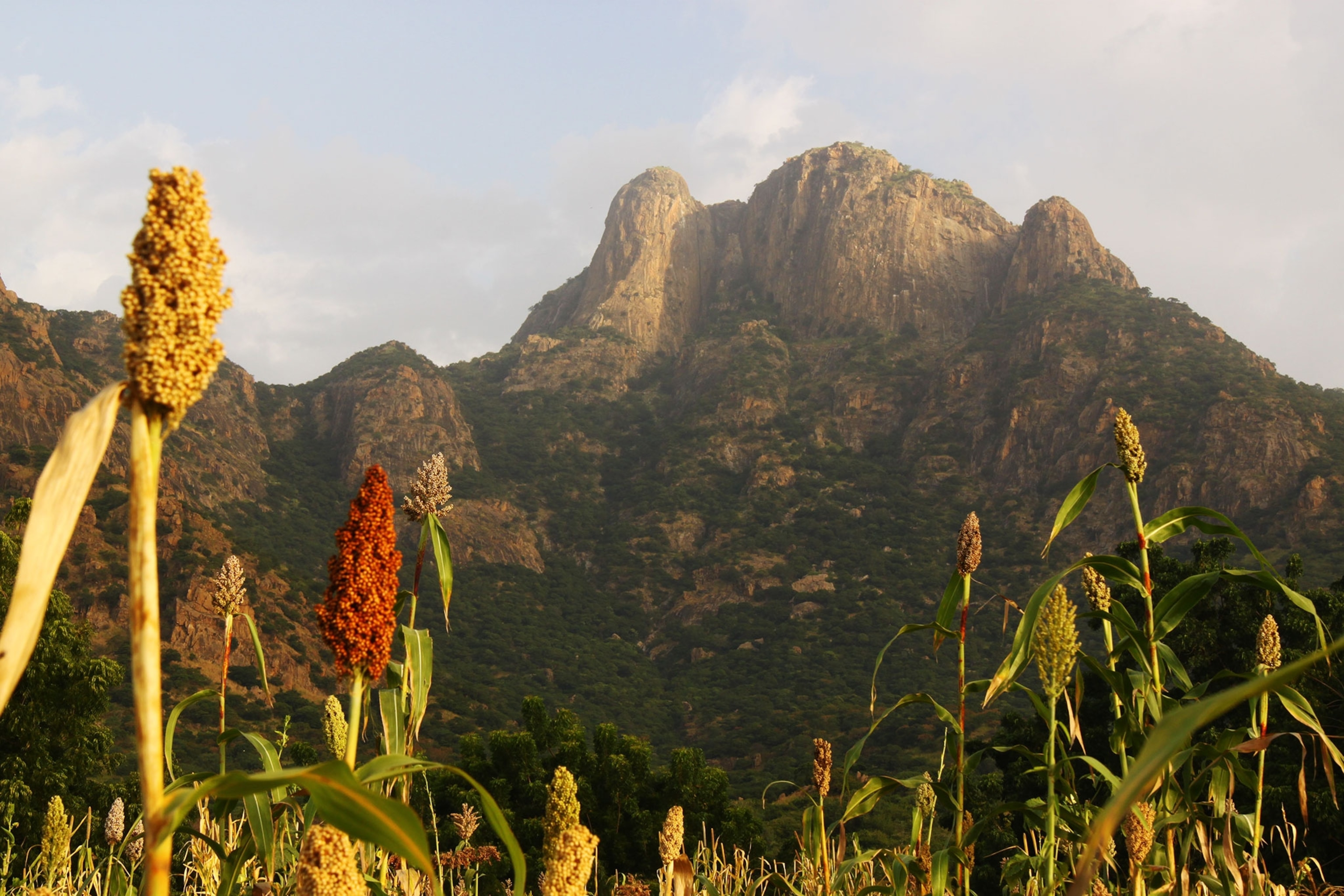
This Tiny Butterfly Can Fly a Record 2,500 Miles at a Time
The painted lady is the longest continuously migrating butterfly ever recorded.
Entomologist Gerard Talavera had traveled more than 2,000 miles from Spain to the remote Sahel Desert to seek out another long-distance voyager: the painted lady butterfly.
But a storm bearing down from the northeast kept Talavera's eyes focused on the sky instead of the low-lying shrubs where the insects may be hiding. Just as decided to pack it in on that day in 2014, a sudden gust of wind blew something into his face.
It was a painted lady. (See stunning photos of butterflies around the world.)
"I was the only person looking for this butterfly in this part of the world, and the winds brought the butterfly to me," Talavera says.

With a grant from the National Geographic Society, Talavera and his mentor, Roger Vila, trekked across Africa's midsection to solve the long-standing mystery of where painted ladies spend the winter.
Commonly Amazing
One of the world’s most ubiquitous butterflies, the painted lady is found on every continent except South America and Antarctica. (Read about the strange, secret life of a jungle butterfly.)
Scientists already knew the painted ladies that blanket North America in the warmer months migrate to Mexico and Central America during the winter.
They've also tracked Eurasian painted ladies as far south as the Sahara, but then the butterflies disappear off the map. Talavera and Vila knew they had to be somewhere in tropical Africa.
Lo and behold, in Chad, Benin, and Niger, Talavera and Vila found vast swarms of painted ladies overwintering in the warmer climes—as many as 20,000 butterflies per hectare.

The discovery proves that the two-inch butterfly can migrate nearly 2,500 miles from Europe, traversing such obstacles such as the Mediterranean Sea, North Africa's mountains, and the Sahara Desert. And, unlike monarch butterflies, chemical signatures in the painted lady wings reveal that they can make the trip in a single generation. (Read about how monarchs migrate 3,000 miles across North America.)
It's the longest continuous butterfly migration ever recorded.
"It’s a common butterfly that does some really unique and amazing things," Talavera says.
Amazing Trip
Before their trip to Africa, Talavera and Vila built a computer model of the locations most likely to be hospitable to painted lady butterflies. Though the team's model was successful, Talavera cautions that studying migratory animals, from birds to turtles to whales, is often a huge challenge—particularly when it comes to migrating insects. (Read more about the world's great migrations in the magazine.)

Adding to the difficulty is the fact that painted lady butterflies can fly at a much higher altitude than other insects, according to Rebecca Simmons, an entomologist at the University of North Dakota.
Unlike monarchs, which are frequently mistaken for painted ladies, the high-flying insects don’t overwinter in the same spot every year. Nor do they migrate on a regular timetable or always make the entire 2,500-mile return trip in a single go.
Baby Steps
"Painted ladies breed along the way. They take these little steps, a generation at a time," Simmons says. Painted ladies can, but don't always, make the migration in a single generation.

Because so little is known about insect migration in general, and painted ladies in particular, Simmons says studies like this are crucial to our understanding of the natural world.
Now that Vila and Talavera have a general idea of where the butterflies spend the winter months, they're building a more detailed map that show what factors, such as food availability, influence the butterflies' movements.
"It's an amazing trip—the type of trip known to birds, but not insects," Talavera says.
Related Topics
You May Also Like
Go Further
Animals
- California brown pelicans are starving to death—despite plenty to eatCalifornia brown pelicans are starving to death—despite plenty to eat
- The world's largest fish are vanishing without a traceThe world's largest fish are vanishing without a trace
- We finally know how cockroaches conquered the worldWe finally know how cockroaches conquered the world
- Why America's 4,000 native bees need their day in the sunWhy America's 4,000 native bees need their day in the sun
- Crowdsourcing an anti-poaching movement in South Africa
- Paid Content
Crowdsourcing an anti-poaching movement in South Africa
Environment
- 2024 hurricane season forecasted to be record-breaking year2024 hurricane season forecasted to be record-breaking year
- Connecting a new generation with South Africa’s iconic species
- Paid Content
Connecting a new generation with South Africa’s iconic species - These images will help you see coral reefs in a whole new wayThese images will help you see coral reefs in a whole new way
- What rising temps in the Gulf of Maine mean for wildlifeWhat rising temps in the Gulf of Maine mean for wildlife
- He’s called ‘omacha,’ a dolphin that transforms into a man. Why?He’s called ‘omacha,’ a dolphin that transforms into a man. Why?
History & Culture
- I wrote this article with a 18th century quill. I recommend it.I wrote this article with a 18th century quill. I recommend it.
- Why this Bronze Age village became known as ‘Britain’s Pompeii’Why this Bronze Age village became known as ‘Britain’s Pompeii’
- These modern soldiers put Bronze Age armor to the testThese modern soldiers put Bronze Age armor to the test
- Should couples normalize sleeping in separate beds?Should couples normalize sleeping in separate beds?
- They were rock stars of paleontology—and their feud was legendaryThey were rock stars of paleontology—and their feud was legendary
Science
- Epidurals may do more than relieve pain—they could save livesEpidurals may do more than relieve pain—they could save lives
- Why the world's oldest sport is still one of the best exercisesWhy the world's oldest sport is still one of the best exercises
- What if aliens exist—but they're just hiding from us?What if aliens exist—but they're just hiding from us?
Travel
- Return to the wild: Connecting with Canada's heritage
- Paid Content
Return to the wild: Connecting with Canada's heritage - A practical guide to cycling Slovenia Green RoutesA practical guide to cycling Slovenia Green Routes
- This road trip journeys through Albania's wild, blue heartThis road trip journeys through Albania's wild, blue heart
- This less crowded ancient temple in Laos rivals Angkor WatThis less crowded ancient temple in Laos rivals Angkor Wat




